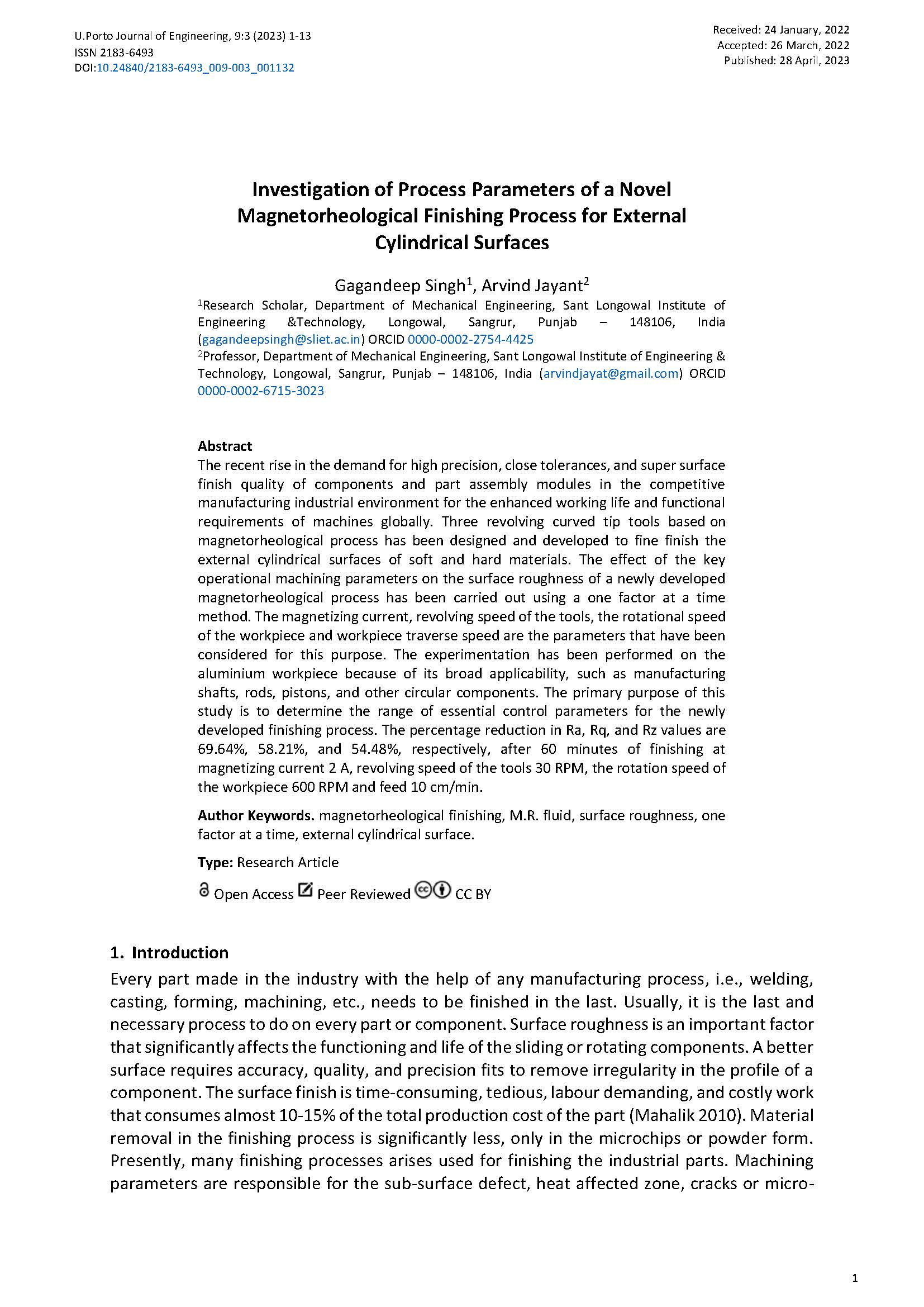Investigation of Process Parameters of a Novel Magnetorheological Finishing Process for External Cylindrical Surfaces
Main Article Content
Abstract
The recent rise in the demand for high precision, close tolerances, and super surface finish quality of components and part assembly modules in the competitive manufacturing industrial environment for the enhanced working life and functional requirements of machines globally. Three revolving curved tip tools based magnetorheological process is designed and developed to fine finish the external cylindrical surfaces of soft and hard materials. The effect of the key operational machining parameters on the surface roughness of a newly developed magnetorheological process was carried out using a one factor at a time method. The magnetizing current, the revolving speed of the tools, the rotational speed of the workpiece, workpiece traverse speed are the parameters that have been considered for this purpose. The experimentation has been performed on the aluminium workpiece because of its broad applicability, such as manufacturing shafts, rods, pistons, and other circular components. The primary purpose of this study was to determine the range of essential control parameters for the newly developed finishing process. The percentage reduction in Ra, Rq, and Rz values are 69.64%, 58.21%, and 54.48%, respectively, after 60 minutes of finishing at magnetizing current 2A, the revolving speed of the tools 30 RPM, the rotation speed of the workpiece 600 RPM and feed 10 cm/min.
Downloads
Article Details

This work is licensed under a Creative Commons Attribution 4.0 International License.
Authors who publish with this journal agree to the following terms:
- Authors retain copyright and grant the journal right of first publication with the work simultaneously licensed under a Creative Commons Attribution License that allows others to share the work with an acknowledgement of the work's authorship and initial publication in this journal.
- Authors grant the journal the rights to provide the article in all forms and media so the article can be used on the latest technology even after publication and ensure its long-term preservation.
- Authors are able to enter into separate, additional contractual arrangements for the non-exclusive distribution of the journal's published version of the work (e.g., post it to an institutional repository or publish it in a book), with an acknowledgement of its initial publication in this journal.
- Authors are permitted and encouraged to post their work online (e.g., in institutional repositories or on their website) prior to and during the submission process, as it can lead to productive exchanges, as well as earlier and greater citation of published work (See The Effect of Open Access).

